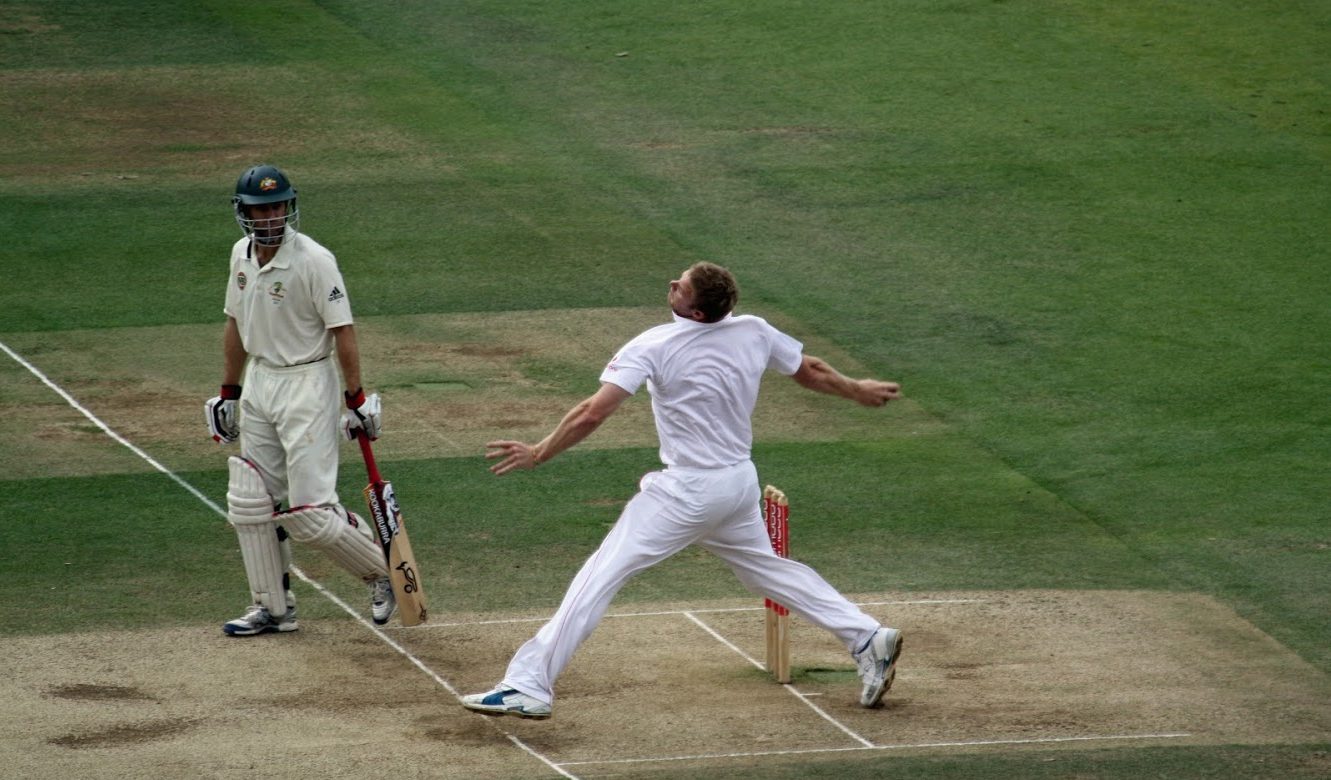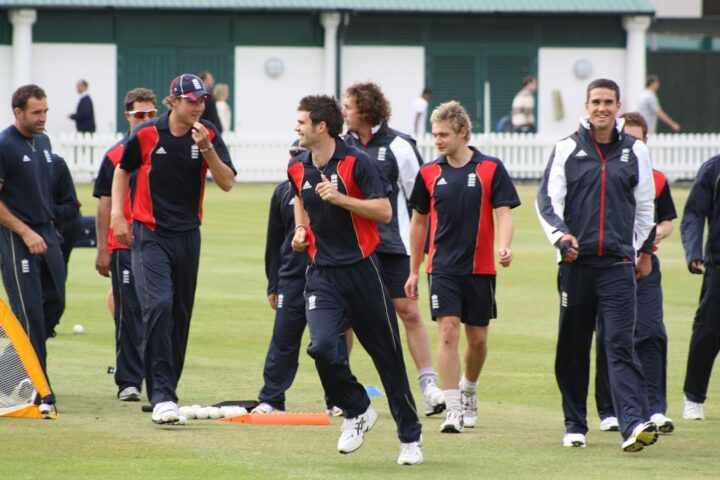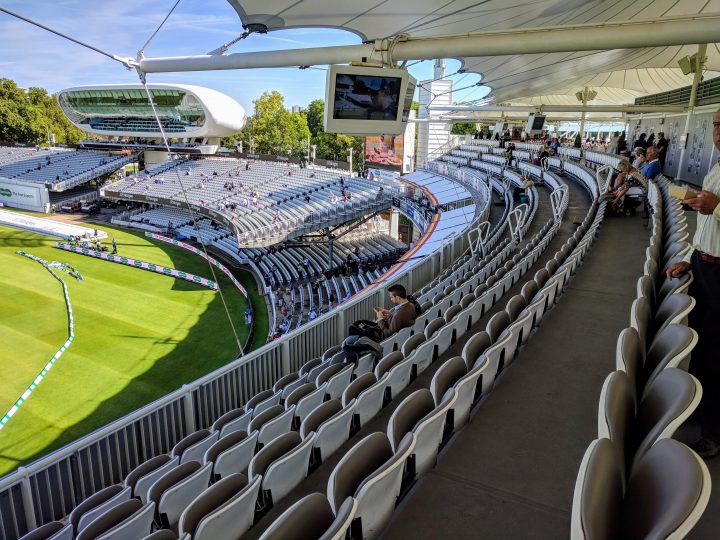Last month, Rob Stephenson wrote this interesting article on modern England seam bowlers blessed with genuine pace. It was a subject that resonated with several readers including James Walker, who sent in the following response that complements Rob’s piece by going back a little further in time. It also explores some of reasons why we’ve produced so few quick bowlers with longevity. Enjoy.
Perhaps one of the greatest tragedies of post-war English cricket is that John Snow and Bob Willis only played together five times – in two series. This was partly because of Willis’s injuries 1973-75, and also because Alex Bedser & co. didn’t like Snow. True, he was a bit truculent, and he had allegedly barged into Sunil Gavaskar at Lord’s in 1971, and dropped after the MCC’s secretary Billy Griffith exploded into the England dressing-room. Nevertheless, Snow was still England’s best and most reliable quick from 1966 to 1976, and surely, if the skipper that the selectors had appointed had said he could manage Snow, then the selectors had a duty to pick him. For at least two-three years, these two might have been England’s ‘Lilian Thomson’.
The England selectors were a rather pathetic cabal of indecisive, incompetents who were controlled by the MCC, who could reward compliance with status and perks, or punish non-compliance. When Illingworth led the Ashes team in 1970-71, rather than aiming to win the series, the MCC manager David Clark, and his MCC chaperones Gubby Allen and Cyril Hawker, plus staunch ally Colin Cowdrey (nominally vice-captain, but on his own ‘farewell tour’), were more concerned with pleasing Don Bradman and the ACB.
Illingworth, Snow, Boycott, Edrich and Luckhurst actually won that series – with no thanks to the MCC. Galvanised by Illingworth, the whole squad were winners. Ian Chappell credits them with teaching his team how to play hard and win, after the Bill Lawry years in which Australia (and everyone else) was aiming not to lose.
Back to the point. As alluded to in the piece, England’s problem has not necessarily been finding quicks; it has been keeping them fit. For that 1970 Ashes series, England took Derbyshire fast-man Alan Ward who broke down after two state games. If he had been a race-horse, they would’ve shot him. Jeff Jones was another, who like his son Simon, had his career ended by injury (both at similar ages with a similar number of test caps) although I think Jones senior would agree his son was a greater loss to England and Glamorgan. The careers of John Price and Ken Shuttleworth were also dogged by injuries. Later, Greg Thomas was another out-and-out quick who was often crocked.
Fast bowling needs athleticism, dedication to fitness, a good, smooth action and of course, luck. John Snow knew this instinctively, and his reputation for truculence stemmed from occasions when he certainly did refuse to bowl flat-out – or occasionally even bowl! – for Sussex because he knew the track was lifeless and that he would be flogging himself. As a result, he was regularly disciplined by Sussex. He also upset Alex Bedser, who was himself no shock bowler, but a willing and accurate 80mph trundler. Bedser simply could not understand the difference in effort it took to generate the extra 10mph+ that Snow had in his back-pocket. Willis, of course, was another who was sometimes accused of diffidence and self-preservation.
Given this, it’s no wonder that – until Botham – the premier English bowlers of my early youth, Geoff Arnold, Chris Old, Mike Hendrick, John Lever, were all 82 mph seamers – wonderful cricketers, especially Old, but not likely to make batsmen hop around. Truly, but for Derek Underwood, Tony Greig and Snow, and later Willis and Botham, England would hardly have won a series away from home between 1967-79…..and thinking about it, they hardly did!
The other English pacemen of the last quarter of the twentieth century all suffered from injury and selectorial caprice – mostly the latter. Between Botham (first cap 1977), and Anderson (2003), England capped 59 fast/seam/fast-medium bowlers and bowling all-rounders… 35 of whom managed only a single-digit no. of caps, and 9 of them fewer than 20 – that’s 75% with fewer then 20 caps, and 60% with fewer than 10. This means that in 26yrs, apart from Botham only 17 made decent careers: Dilley (41 caps), Pringle (30), Foster (29), DeFreitas (44), Fraser (46), Malcolm (40), Lewis (32), Caddick (62), White (30), Gough (58), Cork (37) Flintoff (79), Sidebottom (22), Hoggard (67) and Harmison (62)……and seven of them were selected as all-rounders!
Even with central contracts, I think perhaps that we’re in a similar position today. Since Anderson, there’s been 32 such bowlers capped and 22 (69%) have only managed single-digit appearances – though six to seven of them will surely add to their totals. That only leaves Broad (159), Bresnan (23), Finn (36), Woakes (45 and he has never delivered away from home), Stokes (89), Wood (28) and Sam Curran (24) with established careers. Reece Topley’s might have joined them but his body seems insufficiently robust for Test cricket. Overall, this is a poor return. Where would ENG have been without Anderson and Broad? Back in the 1970s probably… or 1980s or 1990s.
Probably, the two most significant disappointments have been two men with significant bounce and pace: Chris Tremlett, who bowled magnificently in Australia in 2010-11 but only managed 12 Tests due to injury and the inconsistency of playing when not fully fit; the other Steve Finn who even with his run-up ‘troubles’ took 125 test wickets with a strike rate of 51.7
Then again, fast bowling has never really been an Englishman’s thing has it? How could it have been when bowlers have had green tops and grey skies to exploit, with cold conditions and a slog of 20-odd games to endure.
The great generation of West Indian quicks who came to UK from the late-1960s for twenty years, were magnificent athletes, naturally strong and most with sustainable actions; but almost every one of them, was made a complete bowler by the finishing school that was county cricket. Their games were improved by English pitches and conditions, and by the know-how that county coaches and pros shared with them.
Sadly, the process did not work in reverse; only the Almighty can bestow natural talent, pace and the athleticism required to keep fit whilst frightening batsmen. Talent could not be shared out in the nets like knowhow. Most of our British boys have either lacked that crucial bit extra, had it coached out of them, or else beaten out of them by the long, hard season and/or a jarring action.
That’s not to say that the ECB do not make it hard for home-grown players. In 2023, the County Championship starts on 6th April – that’s in 11 weeks, when it’s still likely to be pretty cold and damp. My team plays 4 games in April, 2 in May, 2 in June, 3 in July, none in August and 3 in September. That’s it.
Q1. Why are fast bowlers expected to work so hard at both ends of a season when the weather in cold and damp?
Q2. How many overs will quicks bowl with the sun on their backs and when the pitches have hardened up – like they do in Australia?
Q3. Off the point – but – how on earth can spinners get overs under their belt, and learn to bowl in relatively dry conditions when they only play 5 red ball games in the actual summer?
A1-3. The game is run by clowns. That is the bottom line. They think that English crowds will still turn up to Test matches, and that concomitantly, there is no real need to develop Test cricketers by having them play when the sun shines.
However, despite decent success at home, England’s record away is patchy to poor. Yes, there have been good wins in SA and SL, and of course the recent series in Pakistan was marvellous. However, England have not won a match, let alone a series in Australia since 2011; not a series in NZ since 2008; only one win in India since 1984, and worse, only one series in the West Indies since 1968 – and Windies were supposed to have declined in the last twenty years. Substantial firepower is therefore required. Where is it going to come from? Archer, Wood and Stone have persistent injury issues – although it was great to see the former pick up six wickets in the third ODI this week.
I cannot help but worry about the fitness of our quicks, which combined with the ageing of our greats, Anderson and Broad, could quite easily leave the cupboard pretty bare. With respect to them as truly fantastic cricketers, an England pace/seam attack of Robinson, Overton, Woakes, Curran and Stokes does not carry quite the same threat as Archer, Wood, Anderson and Broad or Robinson (and Stokes).
Still, first things first, good results – and performances – in New Zealand will encourage each and every one of us. We live in hope that in 2023 England might have a full stable of quicks to select from so that Archer and Wood can stick it up the noses of Smith and Labuschagne, thereby forcing them to lose concentration and nick off cheaply to two of Robinson, Anderson and Broad.
James Walker
PS A quick word about Andrew Flintoff. I would say that in Tests he was a bowler of great spells, rather than a great bowler. I saw him at Lord’s in 2009 – only 5-92, but truly two or three of the best spells of fast bowling I’ve ever seen. Magnificent. Perhaps unselfishness was his problem – that and being burdened with too much talent and a famously mischievous temperament.









Three most significant disappointments, surely – the aforementioned Simon Jones perhaps even more so than Tremlett and Finn
A few random points.
Stone looks very promising. Luke Wood perhaps?
Alan Ward had one of the most awkward actions I’ve ever seen – no wonder he was always injured.
You could argue whether this should be relevant, but Chris Tremlett was absolutely the worst fielder I’ve ever seen play for England (and yes, I do remember Monty Panesar!)
Genuine quickies are a rare event. The 70’s were a freak period, especially for the Windies, who seemed to produce a never ending supply. Since then you could almost count them on the fingers of one hand for any country, not just England. The evidence is to bowl consistently at over 90mph is not coachable. All you can do is make sure when one comes along you iron out the technical issues that put extra strain on the body, as bowling is not a natural athletic discipline, it puts enormous stress on comparatively weak joints. There was a terrific photo in the Cricketer magazine of Graham Dilley in delivery stride, his entire body balance on his toes, like a ballet dancer and this would happen every delivery.
When Dexter tried a nationwide school scouting and coaching regime in the 70’s he selected a core of 10-15 youngsters out of hundreds. Only 2 ended up taken on by counties and neither of them made it.
Since it got a mention, I thought it’d be interesting to break down England’s 21st century away record (which isn’t good) compared to the other test playing nations:
Australia P118 W56 L43 D19 W/L 1.302
South Africa P108 W39 L39 D30 W/L 1.000
India P130 W45 L52 D33 W/L 0.865
England P138 W42 L60 D36 W/L 0.700
Pakistan P107 W36 L53 D18 W/L 0.679
Sri Lanka P102 W27 L47 D28 W/L 0.574
New Zealand P92 W22 L47 D23 W/L 0.468
West Indies P110 W16 L72 D21 W/L 0.222
Bangladesh P65 W6 L55 D4 W/L 0.109
“The Fourth best away record of any team this century” sounds a lot better than how we usually discuss their away form, though you could fairly want them to be doing better considering they have vastly bigger resources to call on than all the test teams save for India and Australia.
Although if you change the data set to just the past decade, the picture changes a little:
South Africa P54 W18 L21 D15 W/L 0.857
India P74 W26 L33 D15 W/ L 0.787
Australia P62 W22 L30 D10 W/L 0.733
Pakistan P61 W22 L33 D6 W/L 0.666
England P79 W25 L38 D16 W/L 0.657
Sri Lanka P59 W14 L27 D18 W/L 0.518
New Zealand P54 W14 L29 D11 W/L 0.482
West Indies P53 W10 L32 D10 W/ L 0.312
Bangladesh P33 W4 L27 D2 W/ L 0.148
In spite of their historic wins in Australia, India, and Pakistan that break decades-long dry spells in that period, plus creditable wins in Sri Lanka (two series and five games in a row) and South Africa, their win/ loss ratio and position in the table have dropped back behind Pakistan. That’s about as middling a record as you can get, although it’s worth noting that Australia are no longer surging out in the lead post-Warne and McGrath, and South Africa topping the table with a negative W/L ratio shows teams are generally less good away from home recently.
Personally, I think the issues are less England’s lack of rapid pace bowling (although that is an issue) and more that they just can’t bat well enough to give their generally decent bowlers something to work with – notably their away wins have generally been built off the back of batting line ups that can regularly give them a first innings platform of 450 plus to work with.
It is appalling how badly ENG have done in WIN.
Historically as bad as playing in PAK – worse in fact, because in PAK we usually earned draws.
Since 1930, ENG have been to WIN 16 times, and have won just three series (1928, 1959 and 1968 with draws in 1954, 1974 and 2015). Alistair Cook is the only living ENG captain to gain a series result in the Caribbean.
Since 1990 – when Windies great dominance began to ebb, ENG have only won 5 tests out of 25.
Even since 2000, when ENG began to win series at home, we have only won 2 tests out of 13.
It is perhaps the only blemish on Jimmy Anderson’s career – he has never won a series in West Indies. Though had he been selected to tour in 2022 that might have been rectified.
Only 15 wins from 74 matches (20%) but also with 28 losses (38%) – it is an absolutely dreadful record; especially as Windies have been poor for the past twenty years.
It was before my time, but Peter Lever was apparently pretty sharp in the Ashes in 70-71 along with snow. Didn’t play that many games though perhaps injury prone as well?
I remember reading about David Millns in the early 90s who had some gas, but he never got further than England A. I never saw him bowl live so can’t comment on how quick he may of been.
Tom Curran “taking a break” from red-ball cricket. He’s 27.
The only surprises should be that it’s taken this long and more haven’t followed suit yet….
He played a couple of matches in the championship for surrey last year, his first games of first class cricket in about three years. He bowled a handful of overs and was going for six an over. So not much chance of playing test cricket anytime soon.
I think you’ve missed quite a few, Simon! Curran may be one of the most high-profile players to have gone white-ball-only when he was nowhere near the end of his career–although not even THE most high-profile: they surely remain Alex Hales and Adil Rashid.
But there’s been a steady drip of less high-profile players doing it for several years, not being remotely injury-related: Blake, Chris Wood, Lilley, Evans, Gurney, Smeed and Waller to name a few. There are probably others who I’ve forgotten.
Then there are the players who’ve done it de facto but not contractually: Ali hasn’t played a Championship game since he was 32, Jordan since he was 31 and Roy since he was 29, for example. And of course Morgan virtually gave up playing red-ball cricket as soon as he became England captain.
Great article. Thanks for sharing this informative article about International cricket.